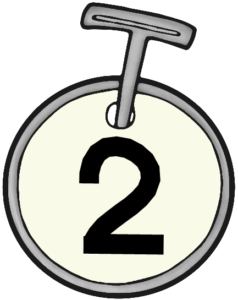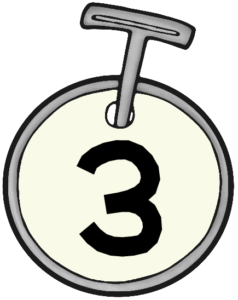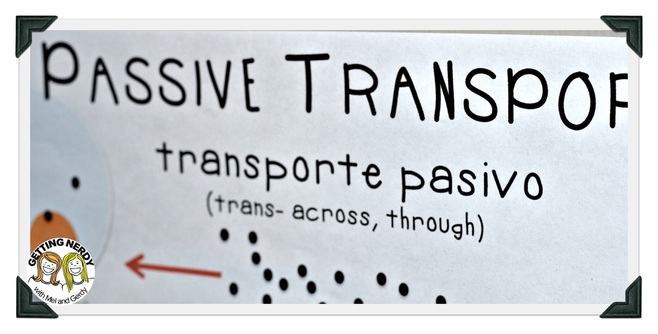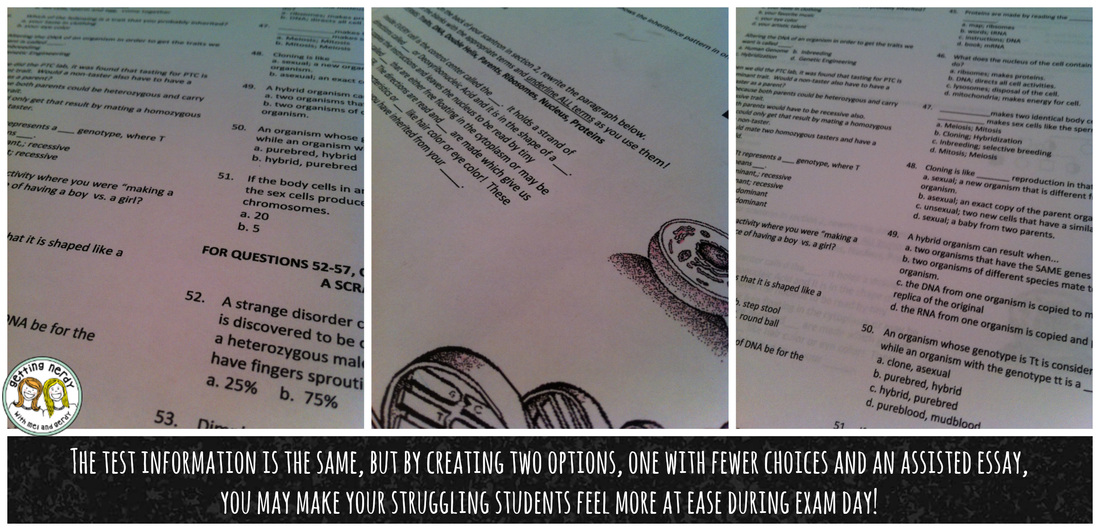
- Are we supposed to create multiple handouts for each lesson?
- How do we ensure that students who need additional support aren’t being singled out?
- How can we best assess students to ensure that they are on level with their peers?
First of all, let’s quickly discuss the difference between differentiation, modification, and accommodation – just to make sure we’re all on the same page.
- Modification: When you make a change in what is being taught or what is expected of the student. Students who receive modifications generally do not do the same level of work as their peers and their modifications are usually identified in the student’s IEP.
- Accommodation: Students are expected to do the same level of work as their peers, but may need additional assistance to complete the work, such as having words read aloud or extra time to complete tests.
- Differentiation: This process of teaching allows you to meet the needs of students with differing abilities in a class by providing different avenues by which they can learn the same material. In this way, you are able to meet the needs of student differences in readiness, interests, and learning needs all while teaching the same lesson.
Here’s our tips for differentiation “in a nutshell” so you can bridge the learning gap and bring success to every student:
 Academic vocabulary is one of the most difficult things for students to grasp, especially in the subject area of science. One way you can make sure your vocabulary is accessible to all is to introduce new terms using a differentiated reading. You can differentiate readings to provide students with the vocabulary in a fun and context rich format that allows for all your varied learning modes with two versions of the same reading – one with the terms embedded as part of the text and one with the terms in bold-face within the text. For those students who struggle, give them the bold-faced term version so they can find words easily within the reading and be able to use the context around the words to quickly and easily identify their meanings. Students that are on or above level will be very comfy with the embedded terms that are not easily identified for them and should be able to glean the meaning of the terms as they read along.
Academic vocabulary is one of the most difficult things for students to grasp, especially in the subject area of science. One way you can make sure your vocabulary is accessible to all is to introduce new terms using a differentiated reading. You can differentiate readings to provide students with the vocabulary in a fun and context rich format that allows for all your varied learning modes with two versions of the same reading – one with the terms embedded as part of the text and one with the terms in bold-face within the text. For those students who struggle, give them the bold-faced term version so they can find words easily within the reading and be able to use the context around the words to quickly and easily identify their meanings. Students that are on or above level will be very comfy with the embedded terms that are not easily identified for them and should be able to glean the meaning of the terms as they read along.
You can also provide differentiation in the way students identify those terms, either by a fill-in-the-blank “match the term with the definition” version or a “write the definition in your own words” version. Differentiate the summary questions as well by providing short answer questions and various graphic organizers for on/above level students and use matching or fill in the blank questions for your struggling learners. Either level of lesson can be easily created using your teacher key made from a Word document by simply deleting a few words here and there from the original and hitting the “Save As” button.
As you hand sheets out in your class, students won’t notice that they are getting different sheets because the readings are the same on the front, with just the light variance in the terms being bold or not. If you’re interested in seeing an example lesson, please try our FREE Ecology vocabulary lesson which is differentiated to meet the needs of all of your learners.
You can also differentiate vocabulary by providing visual word walls in your classroom by creating a VISUAL word wall with root word definitions, colorful pictures, and translations for ELL students. If you want to learn more, check out our Word Wall Blog Post on how to use these as another great tool for your kiddos. DOn’t have time to make your own? We have an entire Life Science vocabulary word wall that is in both English and English/Spanish, comes with colorful visual representations of the vocabulary term, and includes root word definitions for better understanding .
 Note-taking is a skill that can be difficult to acquire and unfortunately, everyone has to take notes. An easy way to differentiate your notes for your students that need assistance is with a fill-in-the-blank outline. In fact, we use this method for ALL of our students at various learning levels because we found that it gives students the opportunity to focus on listening to and understanding the material more thoroughly, participate in class discussions more frequently, ask questions about what they are seeing and hearing during lecture, and creating connections through the tactile act of drawing or doodling about what they see. If you choose not to do fill-in-the-blank for your whole class, you can continue to differentiate further by providing the fill-in-the-blank for your learners that need additional assistance and for those that are on or above level, provide them with a quick graphic organizer. Again, the graphics and language of the handout is the same, but the method for recording information is different.
Note-taking is a skill that can be difficult to acquire and unfortunately, everyone has to take notes. An easy way to differentiate your notes for your students that need assistance is with a fill-in-the-blank outline. In fact, we use this method for ALL of our students at various learning levels because we found that it gives students the opportunity to focus on listening to and understanding the material more thoroughly, participate in class discussions more frequently, ask questions about what they are seeing and hearing during lecture, and creating connections through the tactile act of drawing or doodling about what they see. If you choose not to do fill-in-the-blank for your whole class, you can continue to differentiate further by providing the fill-in-the-blank for your learners that need additional assistance and for those that are on or above level, provide them with a quick graphic organizer. Again, the graphics and language of the handout is the same, but the method for recording information is different.
Testing, Testing… 1-2-3… and four and five and… we’ve lost count. We have to test and test and TEST kids until we don’t even know what we are testing them for anymore. It’s no wonder that kids get test anxiety and often do poorly, even when they study feverishly into the wee hours of the night. One way to aid students in doing better on their academic exams is to provide them with differentiated tests. There are several ways to do this – here’s a couple we have used in the past:
- Fewer answer options per question. On a multiple choice test, offer A and B instead of A, B, C, and D. Those students who really studied but suffer from anxiety will benefit from fewer options and will do well. Students who didn’t study… well, let’s just say that you’ll know if they fail this version of a test.
- Make the font larger and increase the white space on the page. While this seems a like it wouldn’t do much for your test scores, it really helps students to focus on an individual question and makes the test less overwhelming. This trick was shared with us from a paraprofessional who sat in on our co-taught classes.
- Provide essay questions in both short/long answer and fill-in-the-blank formats. Provide the terms needed to answer the question in the essay directions or question. Not only does this prepare students for the real version of an essay, you’ll find you’ll have more successful students when you provide this option on your differentiated tests.
Inspire Students. Love Teaching.
We have everything you need to successfully teach life science and biology. Join over 85,000 teachers that are seeing results with our lessons. Subscribe to our newsletter to get a coupon for $5 off your first order!



